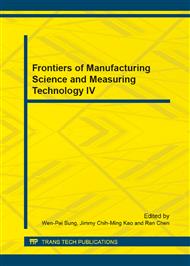p.2044
p.2048
p.2052
p.2056
p.2063
p.2066
p.2070
p.2074
p.2079
An Investigation of Electronic Logistics Management in the Taiwanese Textile Industry: Using Everest Textile as an Example
Abstract:
With the advance of information technology and the advent of the Internet era in the 21st century, enterprises worldwide have been developed in the direction of e-business and the Internet economy. After Taiwan joined the World Trade Organization and information technology contributed to the development of the Internet, Taiwan became a highly competitive environment for enterprises. To increase competitiveness, enterprises should promote global management strategies rather than limiting the enterprise to one area. The textile industry in Taiwan can be rejuvenated by using information technology and adopting an enterprise resource planning (ERP) system. When such a system is adopted, the business-to-business procedures in the industry are not independent from each other, but form a supply chain management system by integrating upstream and downstream operation procedures to reduce production costs and preparation time, increase profits, and create substantial added value. Everest Textile Co., Ltd, which is a textile manufacturer that receives assistance from the Industrial Development Bureau, Ministry of Economic Affairs, Taiwan, was used in this study as an example. The strategies, mode, and benefits of Everest Textile’s electronization were analyzed. Furthermore, relevant literature was reviewed to propose a textile industry electronization model, which is provided as a reference for other textile manufacturers in Taiwan to facilitate the overall improvement of the industry.
Info:
Periodical:
Pages:
2063-2065
Citation:
Online since:
August 2014
Authors:
Price:
Сopyright:
© 2014 Trans Tech Publications Ltd. All Rights Reserved
Share:
Citation:


